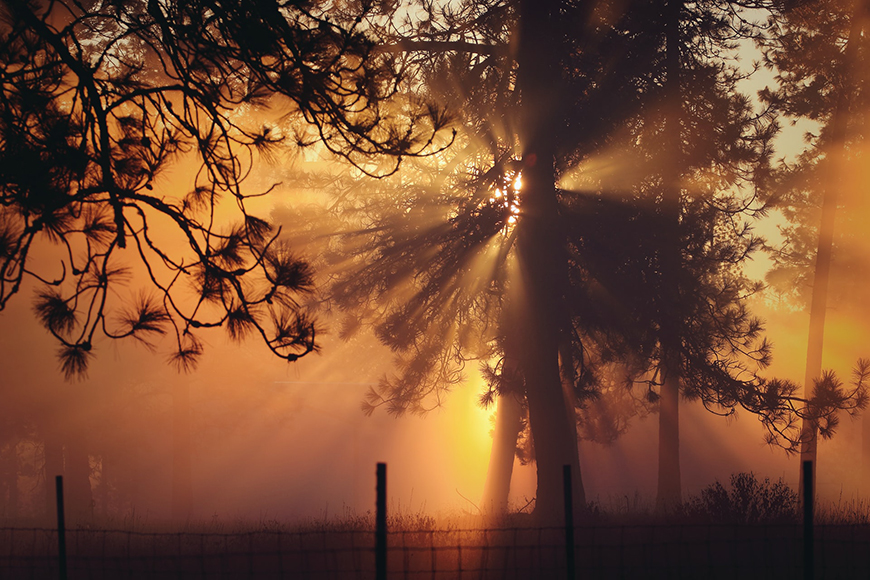Introduction to Lens Flares
Lens flares are visual artifacts that occur when light reflects off the lens elements of a camera, creating a pronounced brightness or spectrum of colors in the frame. These unintended phenomena can manifest as circular or streaky shapes, adding intriguing aesthetic qualities to images. Typically observed when shooting towards bright light sources, such as the sun or artificial lighting, lens flares can evoke emotions and impart a sense of artistic narrative to photographs.
The occurrence of lens flares can be attributed to various factors, including the quality of the lens, the angle of light, and the overall composition of the scene. In traditional film photography, these effects were often viewed as undesirable distractions but have gradually evolved into a celebrated component of modern photographic techniques. Photographers of the past commonly regarded lens flares as an indication of low-quality optics, leading to the development of lens coatings aimed at minimizing such effects. However, advancements in lens technology and changing perceptions of aesthetics have paved the way for creative manipulation and the intentional inclusion of lens flares in both film and digital photography.
In contemporary imaging, lens flares are embraced not only as a natural occurrence but also as an artistic tool that enhances the visual impact of photographs. The application of effects such as the ‘photeeq lens flare’ aids photographers in achieving a unique atmosphere and depth in their work. Utilizing these effects creatively can engage viewers, pulling them into the scene and inviting them to experience the image more deeply. As photographers explore the balance between intention and spontaneity, the lens flare effect continues to shape the evolution of photographic artistry.
Exploring the Photeeq Lens Flare
The Photeeq lens flare effect represents a significant advancement in the world of photography, offering a range of features that distinguish it from traditional lens flare styles. One of the most notable aspects of Photeeq lens flares is their ability to enhance the emotional impact of an image. By introducing organic light streaks, vibrant color bursts, and unique patterns, this effect can elevate the overall aesthetic of a photograph, creating a sense of warmth and nostalgia that resonates with viewers.
One key advantage of the Photeeq lens flare is its versatility. Photographers can choose from various flare types that suit their creative vision. Whether seeking a subtle hint of light or a dramatic burst that draws attention, the Photeeq lens flare offers a diverse selection to cater to different styles. Moreover, users can easily adjust the intensity and color saturation of these flares during post-processing. This level of control allows for tailored results that can complement the specific mood and lighting conditions of an image.
This flexibility is particularly valuable in storytelling through photography. Different flare types can evoke varying atmospheres—such as a soft glow for romantic scenes or bold explosions of color for dynamic urban shots. The Photeeq lens flare effect provides a tool for photographers to manipulate light, adding depth and dimension to their images. As a result, the impact of the photographic composition is often enhanced, as the eye is naturally drawn to these illuminated elements.
In conclusion, the Photeeq lens flare effect combines creativity with technical precision, allowing photographers to explore new horizons in their work. By harnessing its unique features, individuals can improve their images, enriching the viewer’s experience while showcasing their artistic prowess.
Practical Applications of the Photeeq Lens Flare
The Photeeq lens flare effect can significantly enhance a photograph’s visual appeal across various genres. When considering its application in portrait photography, for example, strategically incorporating lens flares can create a dreamy and ethereal quality. By allowing the natural light to interact with the lens, photographers can achieve a soft, glowing aura around the subject. This technique is particularly effective during the golden hour, as the warm sunlight enhances the warmth of the portrait while adding depth to the image. An example of this is a portrait shot where the subject is off-centered, and the flare is positioned to complement their features, leading to a harmonious overall composition.
In the realm of landscape photography, the Photeeq lens flare can be utilized to emphasize the beauty of expansive vistas. Capturing the sun, or other light sources, amidst natural elements can create a captivating focal point. For instance, photographing a mountain range with a lens flare emanating from the setting sun can imbue the image with a sense of scale and majesty. Many photographers experiment with varying angles to capture different flare intensities, enabling them to manipulate the mood of the landscape. This technique not only enriches the aesthetic but also guides the viewer’s gaze toward the focal elements of the landscape.
Street photography, on the other hand, thrives on spontaneity. Utilizing lens flares in this genre can introduce an element of surprise and creativity. Photographers can capture candid moments with flares generated by urban lights or reflections from shop windows. For instance, an image of a bustling street scene could feature a flare bouncing off a nearby building, adding a dynamic quality to the photograph while also contextualizing the urban environment. Such applications can transform ordinary street scenes into vibrant, artistic representations of city life, showcasing how the Photeeq lens flare effect can elevate everyday moments into striking visual narratives.
Common Mistakes and How to Avoid Them
When utilizing the Photeeq lens flare effect, photographers may occasionally fall into specific traps that can degrade the overall quality of their images. One common mistake is the overuse of lens flare, which can distract from the primary focus of a photograph. While lens flares can add a dynamic aesthetic, excessive application may overwhelm the viewer and diminish the impact of the main subject. It is essential for photographers to exercise moderation and ensure that the flare complements the composition, rather than competing against it.
Another frequent challenge arises from improper blending of the lens flare with the original image. A poorly integrated effect can appear unrealistic or disjointed, failing to enhance the composition. Photographers should consider utilizing blending techniques to achieve a cohesive look, ensuring that the lens flare harmonizes with the lighting and tones present in the photograph. Adjusting the opacity and employing blending modes can create a more natural appearance, allowing the flare to enhance the image instead of appearing as a mere overlay.
Additionally, failing to consider the lighting conditions when applying the Photeeq lens flare can result in ineffective or awkward effects. Understanding the light source in the photograph is crucial for realistic lens flare application. For optimal results, photographers should analyze the direction, intensity, and quality of light present in the scene. Aligning the lens flare effect with these elements can enhance the overall ambiance, contributing to a more captivating photograph.
By recognizing these common pitfalls and taking proactive steps to avoid them, photographers can effectively harness the Photeeq lens flare effect to enrich their images, ensuring it serves to elevate the main subject rather than detracting from it.







Leave a Reply